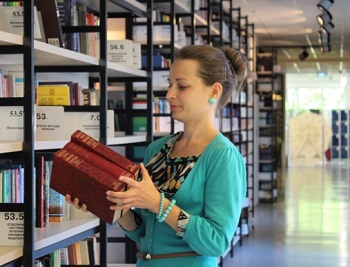A company in India is printing quick response codes on front pages following each chapter for PDF access.
The Maharashtra State Bureau of Textbook Production and Curriculum Research (Balbharti) in India has announced the launch of new QR code textbooks that have been designed to make it easier for students to obtain digital copies and to lighten the load they need to carry in their schoolbags.
The books are being produced for the Class VI syllabus which was recently changed and re-printed.
The new QR code textbooks have barcodes printed on each of the front pages following the chapters which directs the smartphone or tablet user to the official Balbharti website, where all class textbooks can be obtained in PDF format. The hope is that the quick response codes will also be helpful in accessing a smartphone app that is currently in its planning stages.
By using QR code textbooks, students would be required to carry far less in their schoolbags each day.
 The Balbharti website is also undergoing a makeover at the same time that the mobile app is being developed. The hope is that by making the site easier to use, students will be more likely to opt for the digital versions of the textbooks and will not have to carry as much in their bags. The site’s updates will include an e-learning link of both the Marathi and English language magazines such as Kishor. Kishor is a teen focused magazine that is published on a monthly basis by Balbharti. The magazine is celebrating its fortieth anniversary.
The Balbharti website is also undergoing a makeover at the same time that the mobile app is being developed. The hope is that by making the site easier to use, students will be more likely to opt for the digital versions of the textbooks and will not have to carry as much in their bags. The site’s updates will include an e-learning link of both the Marathi and English language magazines such as Kishor. Kishor is a teen focused magazine that is published on a monthly basis by Balbharti. The magazine is celebrating its fortieth anniversary.
The Balbharti controller, Vivek Gosavi, has explained that the size of the textbook has grown to A4 page size to make it possible to print it in a larger font that is more legible and appealing to both students and teachers. However, because of the larger page size, it also means that the books have grown, making them bigger and heavier inside a student’s bag.
Gosavi explained about the QR code textbooks that they are currently being “used as pilot project this year. At least students in urban Maharashtra would get the benefit of this feature. We will observe the response of this feature and will decide on the scope of its introduction in other books next year.”

